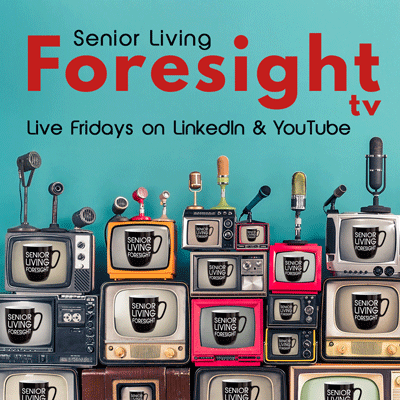Do you partner with your residents to create a Wholeness Community Culture in which everyone feels they belong and are listened to?
By Jack Cumming
Do you partner with your residents to create a Wholeness Community Culture in which everyone feels they belong and are listened to? Not so long ago in rural families and villages, aging was something simply handled in the normal course of every day. Those who were aging helped out to the extent they could, and they were always welcome in the center of family meals and at happy (or sad) village occasions.
That may be a fantasy. We weren’t there. But that’s how I would love to age – accepted and belonging. We sometimes sense what feels like a divide between senior housing residents and those who provide for them. We have to ask, when did that come into being?
One response to that perceived divide has manifested itself in resident calls for rights. Some of those “rights” are written into statute. Others are voluntarily adopted by providers to show their commitment to the residents who trust them. The popularity among residents of “rights” indicates that there’s a problem. If we are one family, one village, in which all are accepted for our contribution, and to which all belong, rights are implicit.
Resident Wishes
Consider for a moment the contentious matter of residents on boards. The commonsense approach would be that residents suited for board service, who meet board standards, are considered for service the same as anyone else. Yet, we hear of cases in which respected directors are required to resign merely because they move into residence. What biases does that exclusion from governance reveal?
With the start of a new year, we have an opportunity to rethink aging. To fashion a positive vision for change, it helps to reflect on commonly held perceptions that deprive senior housing of the value that willing residents can contribute.
-
Talent. Some providers fear that residents are doddering old people. Inactivity, and withdrawal from the work world, they believe, render residents irrelevant to the current realities of a rapidly evolving society. Sadly, this is often true, alongside diminished cognition and discernment. It takes sharp provider awareness to identify those residents, who are not out-of-touch or failing, and who can help shape the future.
-
Discomfort. When my mother was in her 90s and living in a well-run nursing home, I remember the relief that I felt when I would complete my visits and drive away. Many staff people in senior housing feel the same way. They feel relief at the end of a long day, grateful for their freedom and youthful competence. Overcoming fears of aging can open providers to accept resident capabilities.
-
Conflict of Interest. Some providers maintain that residents, if consulted, would resist adequate pricing, including increases, needed to ensure financial soundness. The fear is that residents are too self-centered to grasp the larger business picture. There is, however, no evidence that business-minded residents have that feared bias.
-
Central Office Detachment. Most multi-facility providers have central offices apart from their senior housing operations. Contact between central employees and residents may be severely limited; decisions may be influenced by stereotypes. Central Office Culture can become inward-directed and out of touch. Those enterprises that minimize, or outsource, central operations are freed to focus with clarity on a mission.
-
Legislation Challenge. Some providers resent resident initiated legislation. They may mistrust resident loyalties. The kneejerk reaction is to oppose all legislation not initiated by providers. Naturally, perceptive residents resent being ignored. Such an adversarial approach is at odds with the vision of a Wholeness Culture of mutuality. Bringing all stakeholders together, to listen to each other, and to form common goals is the antidote to partisanship and self-interest. When people hear each other, progress results.
Leadership
Recently, I’ve been reading Doris Kearns Goodwin’s book, Leadership: In Turbulent Times, which relates the success traits of four Presidents, Lincoln, the two Roosevelts, and Lyndon Johnson. Striking is her account of Johnson’s leadership on civil rights. In speaking of Senator Richard Russell, then the leader of the Southern Bloc of the Democratic Party and Johnson’s mentor, Goodwin writes “both men loved the South, but Russell clung to its past while Johnson nurtured a […] vision for its future…”.
At the time, Everett Dirksen, a respected Republican who put country before party, quoted Victor Hugo, saying: “Stronger than an Army is an idea whose time has come.” A new generation of prospects for senior housing and senior services is now demanding a voice. Their sheer numbers make their wishes “an idea whose time has come.” Articles like Kiplinger’s recent, “CCRCs Raise Financial Questions for Retirees,” illustrate the publicity pitfalls inherent in clinging to conventional industry thinking.
Danger of Drift
2019 can be the year in which leaders – perhaps in the name of ending ageism – can take the initiative to motivate progress. It won’t be easy. Change never is. Drift and complacency tempt. The challenges are many. Still, together, we can grasp the opportunities and overcome the problems. Residents with ideas aren’t a threat; they’re the most valuable advisors a senior housing enterprise can have.
We dream of a Wholeness Culture of residents, providers, employees, prospective residents, and family members coming together. A Wholeness Culture approach to aging can make senior housing a respected paradigm for other trust industries to emulate.







